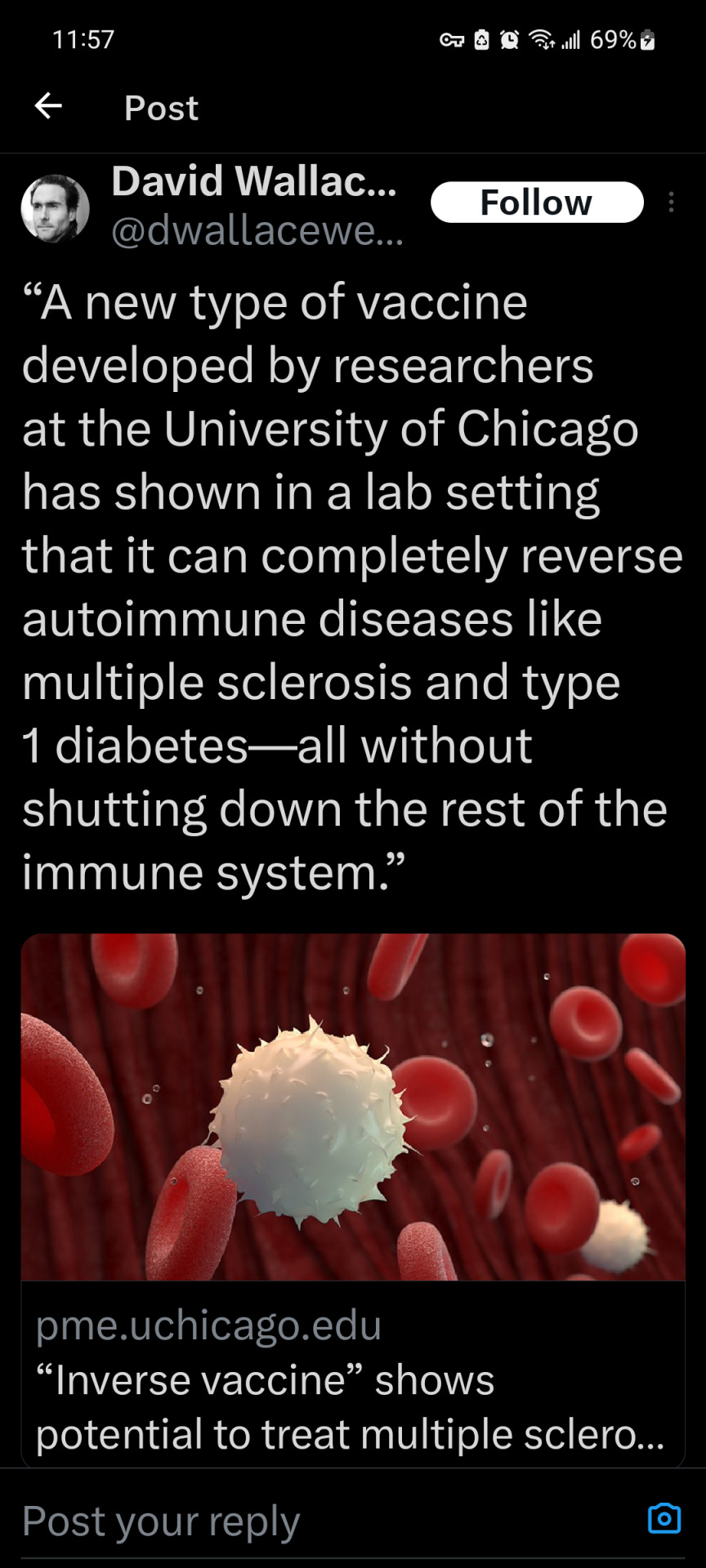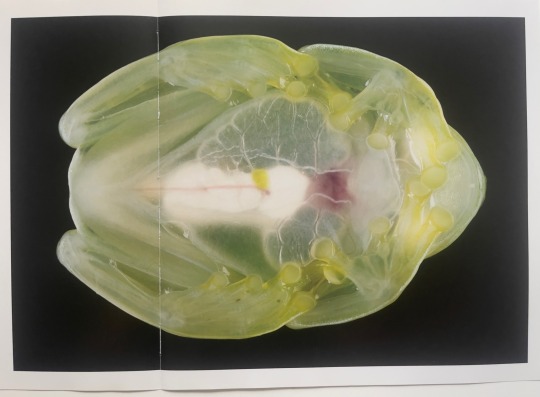Don't wanna be here? Send us removal request.
Text
one of my fav tumblr phenomenons is when there's a poll where all the answers are just patently absurd and yet somehow there's a clear winner
32K notes
·
View notes
Text
66K notes
·
View notes
Text
Histotripsy works by using targeted ultrasound waves to form microbubbles within the tumor. The forces created as those bubbles form and collapse cause the mass to break apart, killing tumor cells and leaving the debris to be cleaned up by the immune system.
What that could mean for patients is treatment without the physical toll of radiation or chemotherapy, fewer concerns with drug compatibility, far shorter recovery times than with surgery and less treatment discomfort.
And histotripsy’s potential benefits go beyond tumor destruction. In the last year, a pair of pre-clinical studies in rodents suggest that in the clean-up process, the immune system learns how to identify cancer cells as threats. This can enable the body to continue fighting the initial tumor and help activate a natural immune response to the cancer.
In the first study, even after destroying only 50% to 75% of the liver tumor volume by histotripsy, the rats’ immune systems were able to clear away the rest, with no evidence of recurrence or metastases in more than 80% of animals.
1K notes
·
View notes
Text
Scientists have discovered cannabidiol, a compound in cannabis known as CBD, in a common Brazilian plant, opening potential new avenues to produce the increasingly popular substance. The team found CBD in the fruits and flowers of a plant known as Trema micrantha blume, a shrub which grows across much of the South American country and is often considered a weed, molecular biologist Rodrigo Moura Neto of the Federal University of Rio de Janeiro told AFP in June. CBD, increasingly used by some to treat conditions including epilepsy, chronic pain and anxiety, is one of the main active compounds in cannabis, along with tetrahydrocannabinol, or THC – the substance that makes users feel high.
Continue Reading.
121 notes
·
View notes
Text
The seagrass beds and coral reefs surrounding the Japanese sub-tropical islands of Okinawa are some of the most biodiverse ecosystems on the planet. Home to more than 360 species of coral alone, these beautiful yet fragile underwater groves provide the habitat for countless species of animals. Now, researchers from Okinawa Institute of Science and Technology (OIST), as well as other universities in Japan and Australia, have made headway in cataloging this abundance of life by describing two new species of pygmy squid—the Ryukyuan Pygmy Squid (scientific name Idiosepius kijimuna, Ryukyu-himeika in Japanese) and Hannan's Pygmy Squid (Kodama jujutsu, Tsuno-himeika).
Continue Reading.
151 notes
·
View notes
Text


immature Ceratiomyxa fruticulosa/honeycomb coral slime mold! my fav slime mold 🤍
307 notes
·
View notes
Text
The Nobel Physics Prize was awarded on Tuesday to three scientists for their work on attoseconds, which are almost unimaginably short periods of time. Their work using lasers gives scientists a tool to observe and possibly even manipulate electrons, which could spur breakthroughs in fields such as electronics and chemistry, experts told AFP. Attoseconds are a billionth of a billionth of a second. To give a little perspective, there are around as many attoseconds in a single second as there have been seconds in the 13.8-billion year history of the universe.
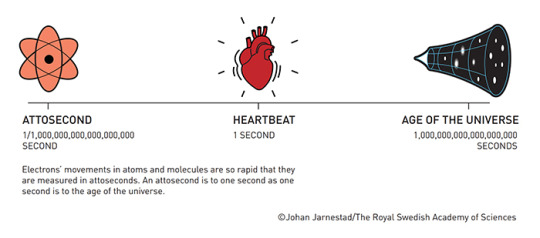
Being able to operate on this timescale is important because these are the speeds at which electrons – key parts of an atom – operate. For example, it takes electrons 150 attoseconds to go around the nucleus of a hydrogen atom. This means the study of attoseconds has given scientists access to a fundamental process that was previously out of reach.
Continue Reading
301 notes
·
View notes
Text
I don't know if someone posted this a long time ago and that's why I know about it or it was cause I researched it myself but I haven't seen it around so I'm gonna post The Worlds Stinkiest Molecule

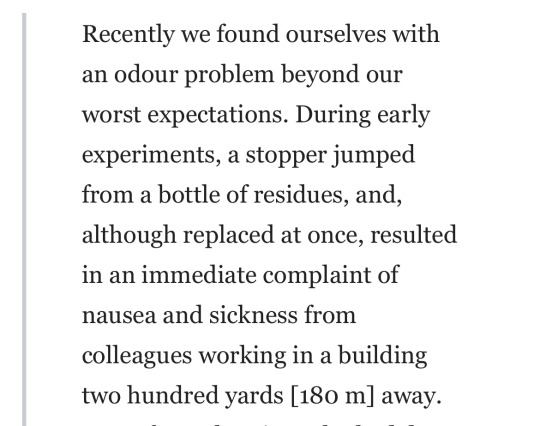


457 notes
·
View notes
Text
Heman Bekele is not your typical high school student. Rather than spending his free time playing video games or staring at his phone, this 14 year-old from Fairfax, Virginia was calling professors and conducting experiments, all to invent a product he hopes could help change the world. His goal is to create a soap that could treat skin cancer, and to make it affordable for everyone who needs it. His work won him the grand prize in this year's 3M Young Scientist's Challenge, a competition that encourages kids to think of unique ways to solve everyday problems. Bekele's award-winning soap was inspired by his childhood in Ethiopia before moving to the United States at the age of 4. The soap delivers cancer- fighting drugs via lipid nanoparticles – which work to activate the body's immune cells to fend off cancer.
Continue Reading.
276 notes
·
View notes
Text
HEY. YOU.
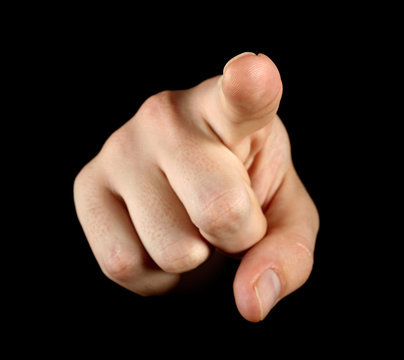
YEAH. YOU.
IT'S TIME TO LEARN ABOUT MARINE IGUANAS.
294 notes
·
View notes
Text
Animal of the Day!
Brazilian Treehopper (Bocydium globulare)
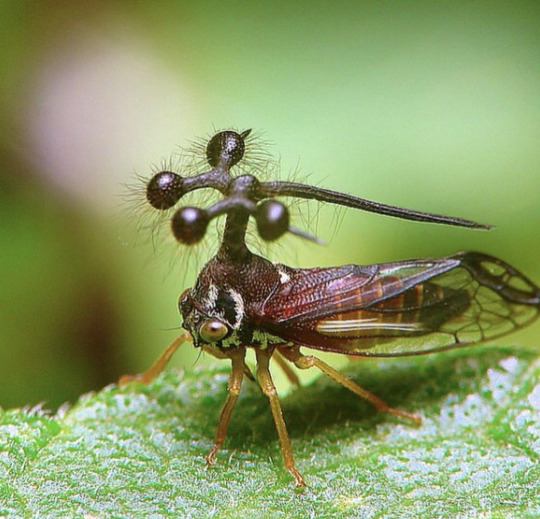
(Photo in Public Domain)
Conservation Status- Unlisted
Habitat- Africa; Asia; North American; South America; Australia
Size (Weight/Length)- 6 mm
Diet- Sap
Cool Facts- No, those aren’t eyes. The Brazilian treehopper has a distinct protrusion sticking out of their thorax called a helmet. Scientists don’t fully understand why the insects grow these outgrowths, but it could be for a bizarre form of camouflage or dissuading predation. Despite being able to fly, the treehoppers only do so when startled. They prefer to crawl on the underside of leaves as they search for sap. Females lay their eggs directly inside the tissue of a leaf and after a few weeks a nymph emerges. After only a month of life, the Brazilian treehopper is ready to have offspring of their own.
Rating- 12/10 (Of the 3,270 treehopper species, this may be the weirdest.)
534 notes
·
View notes
Text
Blood Flow in a Fin

This award-winning video shows blood flowing through the tail fin of a small fish. Cells flow outward in a central vessel, then split to either side for the return journey. (Video and image credit: F. Weston for the 2023 Nikon Small World in Motion Competition; via Colossal) Read the full article
624 notes
·
View notes
Text
Naturally occurring superheavy elements beyond those listed in the periodic table could potentially explain why asteroid 33 Polyhymnia is so dense, new research suggests. A handful of asteroids in our solar system are so dense that no element on Earth can explain their properties. Instead, they may be made of naturally occurring "superheavy elements" beyond those listed in the periodic table — our current best catalog of 118 chemical elements — new research suggests. "If asteroids do indeed contain superheavy elements, it would open numerous questions surrounding how these elements were formed and why we have not discovered them outside of asteroids yet," study co-author Johann Rafelski, a physics professor at the University of Arizona, told Live Science.
Continue Reading
368 notes
·
View notes
Text
Speculative evolution is Fanfiction for scientists. No I will not elaborate.
139 notes
·
View notes
Text
Researchers have finally discovered the key to these fluff-ball's signature sound, which involves squishy pads in a cat's vocal cords. Scientists have puzzled over how cats manage to make their distinctive low-pitched purr, as low frequency sounds are usually made by larger animals with longer vocal cords. These 'purring pads' of connective tissue embedded in the vocal folds appear to increase the density, making them vibrate more slowly to produce the rumble that brings joy to their humans. The international team led by voice scientist Christian Herbst from the University of Vienna in Austria says their research challenges the widely held belief that active muscle contractions are what cause purring. Instead, the scientists think that purring may be a passive aerodynamic behavior that continues automatically after the brain sends an initiating signal.
Continue Reading
277 notes
·
View notes
